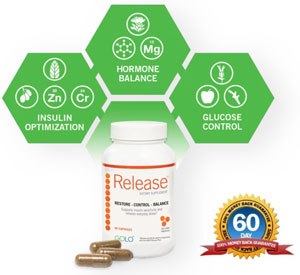Fitness
What is the most effective way to build muscle?
Published
2 years agoon
By
mbkteam
Building muscle is a journey of dedication, precision, and patience. While the benefits of a muscular physique are both aesthetic and functional, the path to achieving those gains can seem daunting. This comprehensive guide will walk you through the essential muscle-building components, including practical training techniques, nutrition's importance, and consistency's value. Whether you're a novice or a seasoned gym-goer, this guide provides actionable insights to help you reach your muscle-building goals.
Understanding Muscle Hypertrophy
Muscle hypertrophy, the process of increasing muscle size, is a complex physiological phenomenon. It occurs when muscle fibers sustain damage during exercise, activating satellite cells that repair and grow the muscle. To maximize hypertrophy, your workouts should include both compound and isolation movements. Compound exercises like squats, deadlifts, and bench presses involve multiple muscle groups and joints, providing a robust stimulus for overall muscle growth. Conversely, isolation exercises target specific muscles, allowing you to focus on weak points and achieve balanced development.
Effective training for hypertrophy requires a strategic approach to sets, repetitions, and rest intervals. A general guideline is to perform 3-6 sets of 6-12 repetitions for each exercise, with rest intervals ranging from 60 to 90 seconds. This rep range is optimal for muscle growth because it balances mechanical tension, metabolic stress, and muscle damage. It's important to progressively overload your muscles by gradually increasing the weight or resistance in your exercises. This ensures continuous adaptation and growth.
Essential Exercises for Muscle Building
Squats: Squats are a cornerstone of any muscle-building program. They engage multiple muscle groups, including the quadriceps, hamstrings, glutes, and core. To perform a squat, stand with your feet shoulder-width apart, lower your body by bending your knees and hips until your thighs are parallel to the ground, and then return to the starting position. Ensure your back remains straight and your knees do not extend beyond your toes.
Bench Press: The bench press targets the pectoral muscles, triceps, and shoulders. Lie on a bench with your feet flat on the ground, grip the barbell with your hands slightly wider than shoulder-width apart, and press the barbell upward until your arms are fully extended. Slowly lower the barbell back to your chest and repeat.
Deadlifts: Deadlifts are a full-body exercise that primarily targets the posterior chain, including the hamstrings, glutes, lower back, and traps. Stand with your feet hip-width apart, grip the barbell with your hands just outside your knees, and lift the bar by extending your hips and knees while maintaining a neutral spine. Lower the bar back to the ground with control.
Overhead Press: This compound movement targets the deltoids, triceps, and upper chest. Stand with your feet shoulder-width apart, press the barbell or dumbbells overhead until your arms are fully extended, and then lower the weights back to shoulder level.
Pull-Ups: Pull-ups are an excellent bodyweight exercise for the back and biceps. Grip the pull-up bar with your palms facing away from you and your hands shoulder-width apart. Pull your body upward until your chin is above the bar, then lower yourself back to the starting position.
The Role of Nutrition in Muscle Growth
Nutrition plays a crucial role in muscle building. A well-balanced diet with sufficient protein, carbohydrates, and fats supports muscle repair and growth.
Protein: Protein is the building block of muscle tissue. To optimize muscle synthesis, consume 1.2 to 2.2 grams of protein per kilogram of body weight daily. High-quality protein sources include lean meats, poultry, fish, eggs, dairy products, legumes, and plant-based proteins like tofu and tempeh. For more information on the importance of diet in muscle building, check out Herbalife's insights on nutrition for muscle growth.
Carbohydrates: Carbohydrates are essential for replenishing glycogen stores, which fuel your workouts. Complex carbohydrates, such as whole grains, fruits, vegetables, and legumes, provide sustained energy and essential nutrients. Aim to include carbohydrates in your pre-and post-workout meals to optimize performance and recovery.
Fats: Healthy fats support hormone production, including testosterone, which plays a vital role in muscle growth. Include sources of healthy fats in your diet, such as avocados, nuts, seeds, olive oil, and fatty fish.
Hydration: Staying hydrated is often overlooked but critical for muscle function and recovery. Dehydration can impair performance and slow down the recovery process. Aim to drink at least 3 liters of water daily, and more if you are training intensely.
The Importance of Consistency and Recovery
Building muscle is a marathon, not a sprint. Consistency in your training and nutrition regimen is paramount to seeing long-term results. It’s not about making radical changes overnight but sustainable, incremental improvements.
Workout Routine: Develop a structured workout routine that includes resistance training at least three to five times weekly. Split your workouts to focus on different muscle groups on other days, allowing adequate rest for each group. This can be achieved through various splits, such as upper/lower body splits, push/pull/leg splits, or full-body workouts.
Recovery: Muscles grow during recovery, not during the workout. Prioritize sleep, aiming for 7-9 hours per night, to allow your body to repair and grow muscle tissue. Incorporate rest days into your routine to prevent overtraining and reduce the risk of injury.
Progress Tracking: Keep a training log to track your exercises, sets, repetitions, and weights. This helps you monitor progress and make necessary adjustments to your routine. Progressive overload can be achieved by increasing the weight, reps, or sets, ensuring continuous muscle growth.
Warm-Up and Cool-Down: To prevent injury, always begin your workout with a warm-up session with dynamic stretching and light aerobic activity. Post-workout, engage in static stretching and foam rolling to help relax and lengthen muscles, aiding in recovery.
Common Mistakes in Muscle Building and How to Avoid Them
Lack of Proper Form: Using incorrect forms can lead to injuries and ineffective workouts. Focus on mastering the form of each exercise before increasing the weight. Consider working with a certified fitness professional to ensure you’re performing exercises correctly.
Overtraining: While pushing your limits is tempting, overtraining can lead to burnout and injuries. Listen to your body and allow adequate rest between workouts. If you experience persistent fatigue, soreness, or performance plateaus, it might be time to take a break or reduce your training volume.
Neglecting Nutrition: Building muscle isn’t just about lifting weights; it’s also about fueling your body correctly. Ensure you’re consuming enough calories and nutrients to support muscle growth. Avoid extreme diets that don’t provide the necessary nutrients.
Ignoring Rest and Recovery: Recovery is as important as the workout. Without sufficient rest, your muscles won’t be able to repair and grow. Incorporate rest days and prioritize sleep to give your body the time it needs to recover.
Practical Tips for Sustainable Muscle Growth
Set Realistic Goals: Begin with realistic and achievable goals. Understand that significant muscle growth takes time and effort. Setting short-term milestones can help keep you motivated and focused.
Customize Your Routine: Tailor your workout routine to fit your needs and preferences. This includes choosing exercises that you enjoy, and that suits your fitness level. Variety in your workouts can also prevent boredom and maintain your interest.
Stay Educated: Stay informed about the latest research and trends in fitness and nutrition. Reputable sources, such as Healthline's strength training guide, can provide valuable insights and tips.
Surround Yourself with Support: Engage with a community of like-minded individuals who share your fitness goals. This can be through a gym, online forums, or fitness classes. Having a support system can provide motivation, advice, and encouragement.
Adapt and Evolve: As your fitness level improves, don’t be afraid to adapt your routine. This could mean increasing the intensity of your workouts, trying new exercises, or adjusting your diet. Keeping your body challenged is key to continuous growth.
Integrating Technology in Muscle Building
With advancements in technology, there are numerous tools available that can aid in your muscle-building journey.
Fitness Apps: Numerous apps can help you track your workouts, monitor your progress, and provide workout plans tailored to your goals. Apps like MyFitnessPal can also assist in tracking your nutritional intake, ensuring you meet your dietary needs.
Wearable Technology: Devices like fitness trackers and smartwatches can monitor your activity levels, heart rate, and sleep patterns. This data can provide insights into your overall fitness and recovery, helping you make informed decisions about your training.
Virtual Workouts: Online platforms offer many workout videos and virtual training sessions. These resources can be handy if you’re working out at home or prefer some guidance during your exercises. However, it’s essential to ensure these sources are credible. For example, Piedmont Healthcare provides valuable tips for building muscle at home.
The Psychological Aspect of Muscle Building
Building muscle isn’t just a physical endeavor; it’s also a mental challenge. Developing a strong, disciplined mindset can significantly impact your success.
Mental Resilience: Building muscle requires patience and persistence. There will be days when progress seems slow or motivation wanes. Developing mental resilience can help you push through these periods and stay committed to your goals.
Positive Self-Talk: Encourage yourself with positive affirmations and self-talk. Believe in your abilities and celebrate your progress, no matter how small. Positive reinforcement can boost your confidence and keep you motivated.
Visualization: Visualize your goals and the steps you must take to achieve them. This technique can help you stay focused and maintain a clear direction in your fitness journey.
Stress Management: High-stress levels can negatively impact your physical and mental health, hindering your progress. Incorporate stress management techniques such as mindfulness, meditation, or yoga to maintain a balanced and healthy mindset.
Conclusion
Building muscle is a multi-faceted journey encompassing practical training, proper nutrition, consistency, and mental resilience. By understanding the principles of muscle hypertrophy, incorporating essential exercises, fueling your body with the right nutrients, and maintaining a disciplined and positive mindset, you can achieve your muscle-building goals. Remember that patience and persistence are key—muscle growth takes time, but you will see substantial results with dedication and the right approach. For further insights into strength training and muscle building, consider exploring additional resources like the Mayo Clinic's fitness guide for comprehensive advice and tips. Stay focused, stay motivated, and most importantly, enjoy the journey towards a stronger, healthier you.













